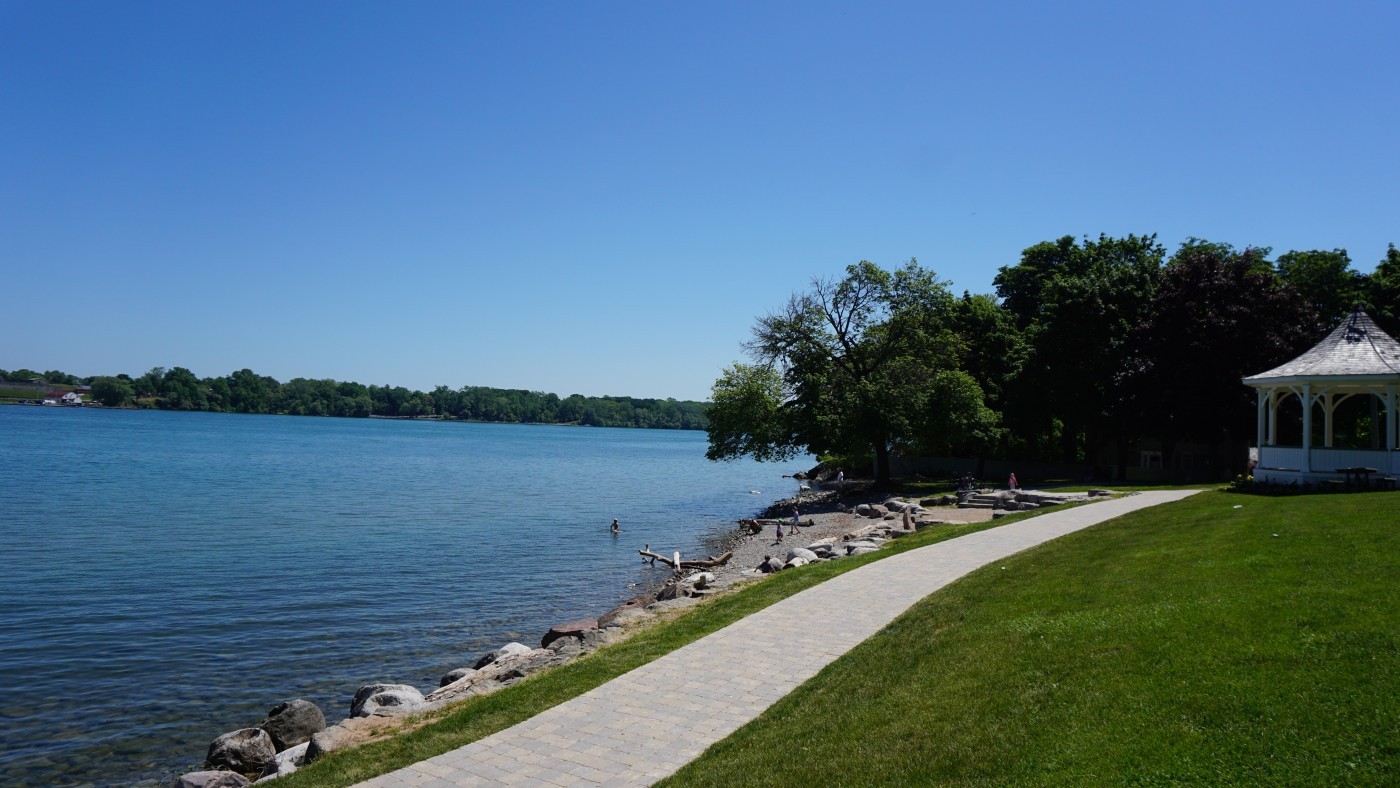Niagara River water quality indicator officially changed to ‘not impaired’
The Niagara Peninsula Conservation Authority (NPCA) and its partners working on the Niagara River Remedial Action Plan (RAP) program have reached an important environmental milestone. The ‘Beach Closings’ Beneficial Use Impairment (BUI), used by the RAP program to indicate water quality issues caused by human sources of bacterial pollution, has officially been declared ‘not impaired’.
In early March, the NPCA received correspondence from Environment and Climate Change Canada officially confirming the re-designation of this water quality indicator in the Niagara River. The status change is a tremendous achievement for the entire region and highlights what can be achieved through collaboration, focused study, and remediation efforts to improve environmental conditions.
Since the early 1990s, water quality problems related to urban stormwater impacted recreational swimming at Queen’s Royal Beach in the Town of Niagara-on-the-Lake – the only public swimming beach on the Canadian side of the Niagara River. To address issues at the beach, the NPCA, Niagara-on-the-Lake, and other RAP partners with federal and provincial funding support, led extensive water quality monitoring, microbial source tracking studies, storm sewer investigations, and implementation of remedial actions that have resulted in significant water quality improvements.
An assessment report completed in 2021 summarized key findings showing the improved water quality and recommended the status change. The NPCA sought feedback on the recommendation from the community, Indigenous partners, and U.S. RAP representatives through comprehensive outreach efforts from June 2021 to May 2022. Support for the status change was received before submitting its recommendation to the governments of Canada and Ontario for final approval and removal of the BUI.
Due to the dynamic nature of beach environments and natural influences, such as wildlife and rainfall, it is unlikely for a beach to be entirely free of E. coli bacteria all the time. Ongoing water quality monitoring and communications by the Town of Niagara-on-the-Lake and Niagara Region Public Health will continue to ensure people are aware of potential risks and help them make decisions to protect their health.
For more info on the Niagara River Remedial Action Plan: niagarariver.ca
Follow on Facebook and Twitter for more updates.
For more info about water quality monitoring for public beaches across Niagara, visit niagararegion.ca/living/water/beaches
—30—
QUOTES
“Water is critical to supporting our local environment, economy, and human health. The NPCA is proud to be leading the Niagara River Remedial Action Plan program with its partners since the 1990s to prioritize and mobilize actions to improve water quality and ecosystem health. We sincerely thank the Government of Canada and Province of Ontario for their continued investments in the health of the Great Lakes and their surrounding communities.”
Chandra Sharma, CAO, Niagara Peninsula Conservation Authority
“While this news brings RAP partners one step closer to delisting the Niagara River, there is more work to be done. Progress continues to be made on implementing priority actions, as identified in the RAP’s five-year Delisting Strategy, to restore four remaining impairments related to fish consumption, sediment quality, habitat, and fish and wildlife populations.”
Natalie Green, NPCA Manager, Climate Change & Special Programs
"Queen's Royal Beach boasts a breathtaking view and a unique waterfront experience in Niagara-on-the-Lake. Improving the water quality is a significant achievement for the Town, NPCA, and Environment and Climate Change Canada, and I am very grateful for all community partners who remained dedicated to improving the water quality of the Niagara River. Congratulations on this wonderful achievement."
Marnie Cluckie, CAO, Town of Niagara-on-the-Lake
About the Niagara River Remedial Action Plan (RAP): The Niagara River was identified as one of 43 Great Lakes’ Areas of Concern in the late 1980s due to water quality and habitat problems. The Niagara River RAP program brings together various organizations to improve the river’s water quality and ecosystem health through implementing targeted monitoring and/or restoration efforts. The goal of RAP is to restore up to 14 environmental challenges in order to remove the Niagara River from the list of Areas of Concern.
About Niagara Peninsula Conservation Authority: The NPCA is a community-based natural resource management agency that works to protect, enhance, and sustain healthy watersheds. The NPCA is a key leader in driving the actions toward healthy and vibrant Great Lakes through its coordination of the Niagara River Remedial Action Plan since 1999.
With more than 63 years of experience, the NPCA offers watershed programs and services that focus on flood and hazard management, source water protection, species protection, ecosystem restoration, community stewardship, and land management. The NPCA is one of 36 Conservation Authorities in the Province of Ontario and manages 41 Conservation Areas within the Niagara Peninsula watershed held in public trust for recreation, heritage preservation, conservation, and education. These natural and shared greenspaces marry nature, culture, and adventure to create limitless opportunities for discovery.
Questions related to the above release should be directed to:
Erika Navarro
Communications and Marketing Specialist
Mobile: 905-650-4027
enavarro@npca.ca

